View Archive
Early Figures
I have always appreciated English pottery figures made between 1780 and 1840. They are wonderfully decorative and a prism for peering into the past through the eyes of those who lived then. Fashioned in an era before photography, they afford intriguing three-dimensional glimpses of the people and happenings of those bygone times. Although intrinsically delicate, they exude naive robustness and a colorful cheerfulness that charms. These figures are not just pretty and decorative objects, and they are also important historical artifacts documenting aspects of life otherwise passed and unrecorded.
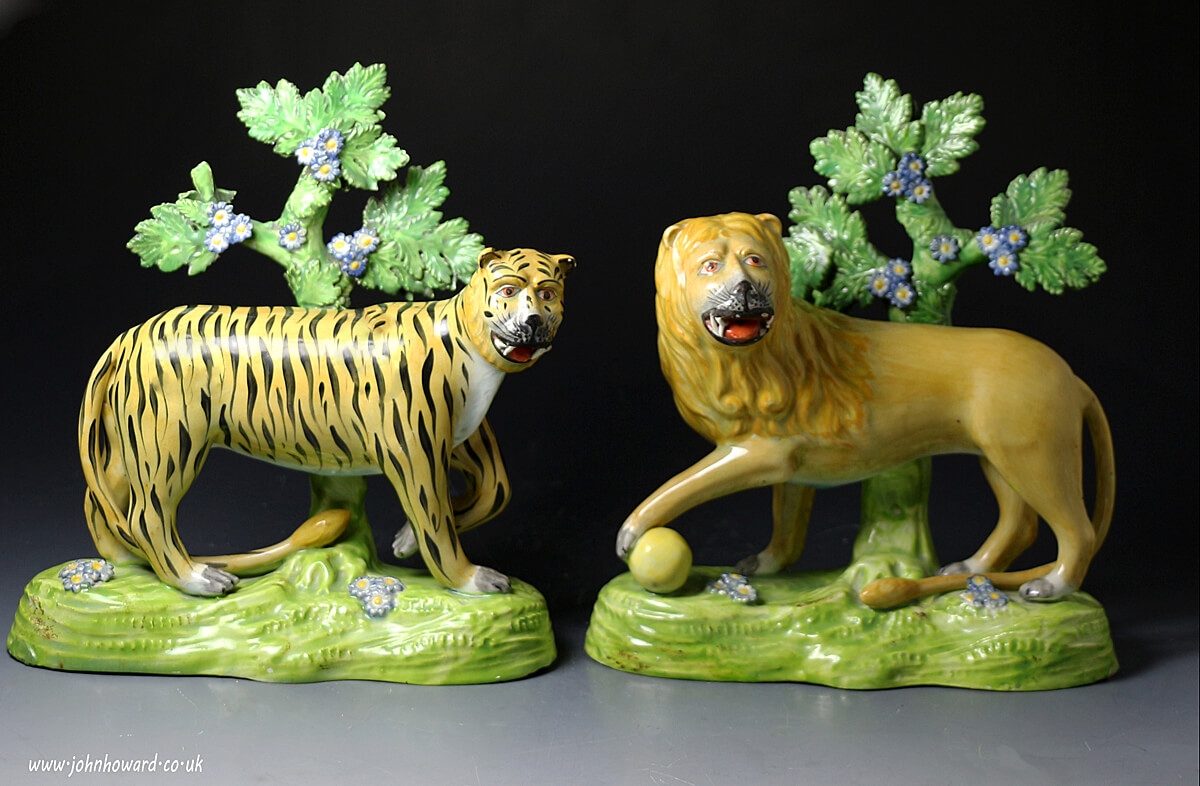
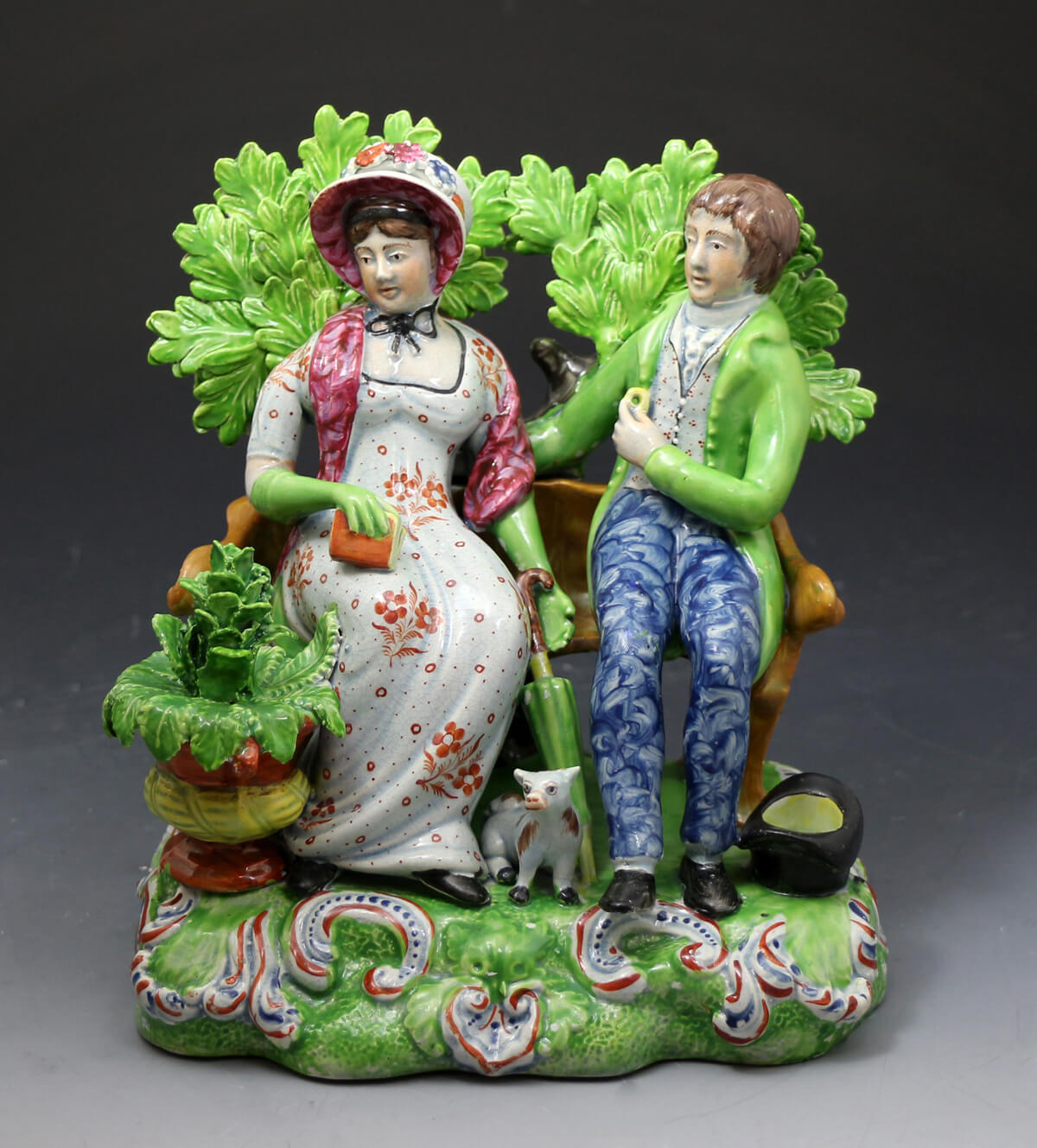
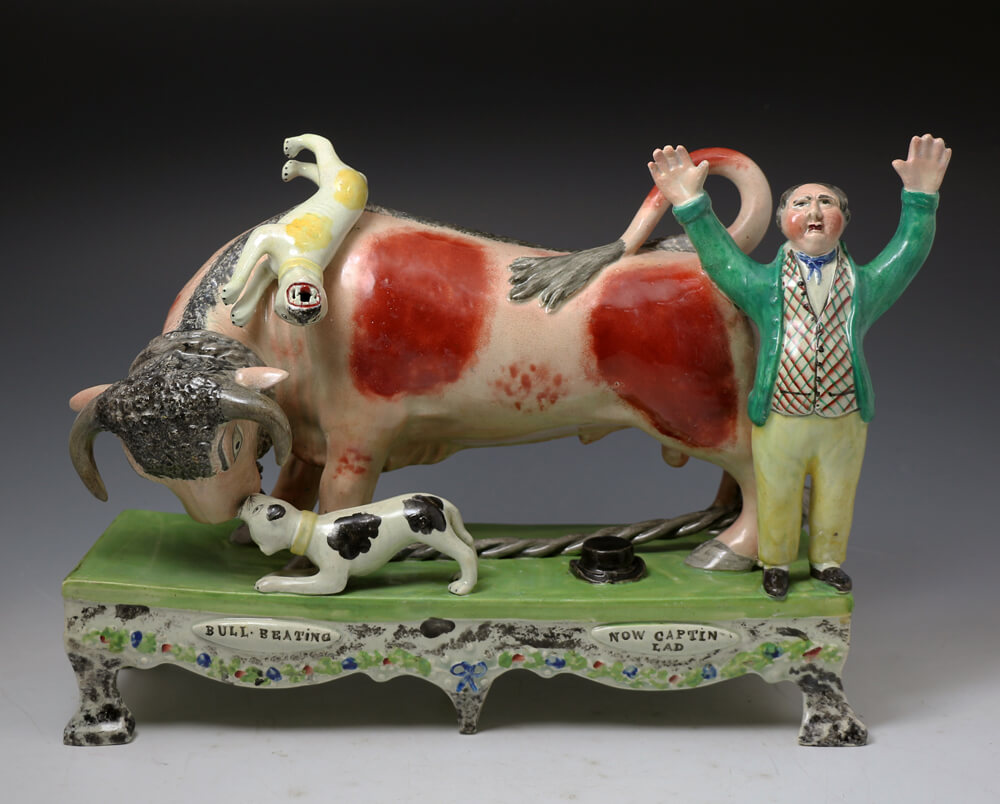
Early English pottery figures are especially engaging because they reveal the full spectrum of everyday life in the 18th and early 19th century and often depict ordinary people engaging in everyday activities—street vendors, children at play, musicians, and gardeners are all captured in clay. Others portray meaningful life-cycle events, including courtships, weddings, and christenings.
Influential people are also fashioned in figural form—radical activists, religious leaders, politicians, military heroes, royalty, and actors and actresses, to name a few. The figures record events that influenced the course of western civilization, including the Agricultural Revolution, the French Revolution, the early temperance movement, and the drive to spread literacy. They allow us to understand what mattered to people—the emphasis on classical figures that dictated the décor of the day, and the host of biblical figures that reflect the centrality of faith. They invite us to ponder how far we had come from that not-so-distant time when barbaric animal sports were central to popular culture, and young waifs were forced to clean chimneys. Collectively, the figures document the people and events that shaped their era, and ultimately, the world we live in today.
Reference Books
- Myrna Schkolne’s four-volume work Staffordshire Figures 1780-1840, published by Schiffer Publishing, is an ambitious effort to catalog and attribute the enormous body of early enamel-painted pottery figures made in the Staffordshire Potteries during the Industrial Revolution. Within their color-packed pages, over 4,000 images afford engaging glimpses of a vanished world. These volumes pay tribute to the potters’ work and importantly, Myrna’s ground-breaking work on attributions will provide an enduring foundation of knowledge for museums and collectors.
Showing 97–104 of 104 results
-
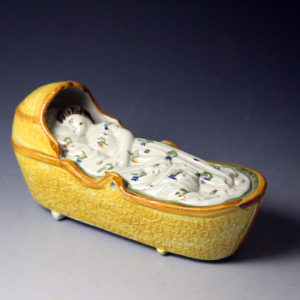
Antique English pottery figure of a child in a cradle Prattware colours early 19th century. PRICE £685
£685$924
-
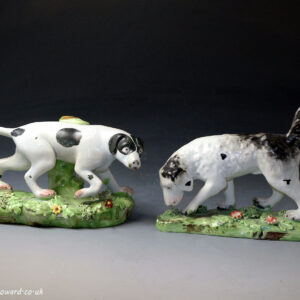
Antique Staffordshire pearlware pottery pair of figures of pointer and setter sporting dogs c1820
£950$1282
-
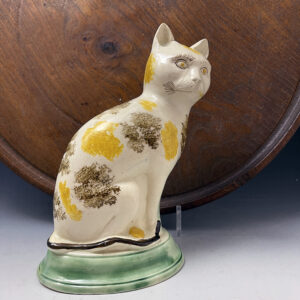
Antique English Staffordshire pottery figure of a seated cat with underglaze colours c1780.
£2350$3172
-
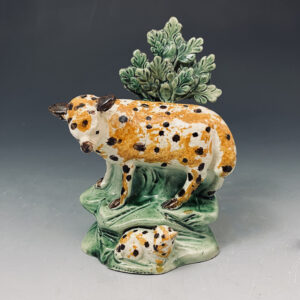
Staffordshire pottery early bocage figure of a spotted ewe and lamb circa 1800
£950$1282
-
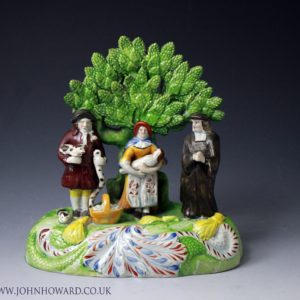
Antique Staffordshire figure group “Tithe Pig” early 19th century England
£1250$1687
-
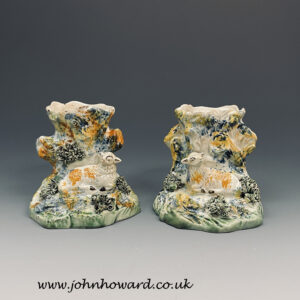
Pair of English tree trunk with sheep figures late 18th century
£775$1046
-
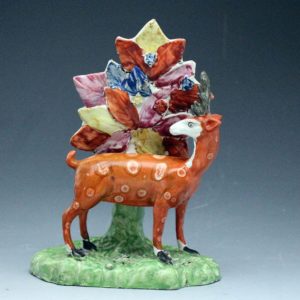
Staffordshire pottery pearlware figure of a stag with exceptionally rare bocage
£875$1181
-
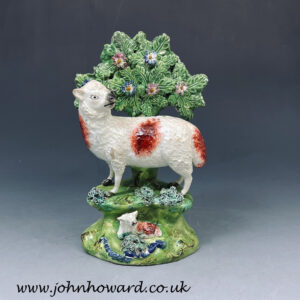
Staffordshire pottery bocage figure of a ewe marked WALTON created circa 1820
£485$654

